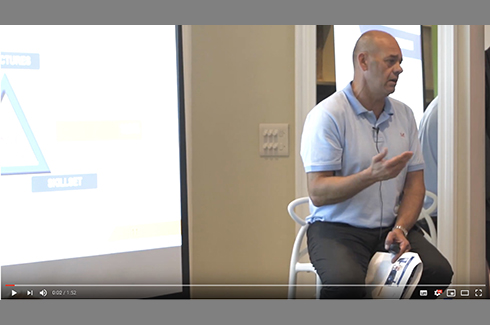When it comes to developing sustained success in sports, being physically fit is only half the story.
It’s commonly assumed that any level of success in sport is simply ‘practice makes perfect’; that repetition is all that’s needed. Footballers spend hours playing keepy-uppy, golfers are always on the practice green, and so on. What’s become popular recently, however, is the ‘cohesive coaching’ approach, providing a broader, more encompassing style.
Repetition isn’t enough
People imagine cohesive coaching is why we see Formula 1 drivers in the gym, or hockey players spending hours in the pool – and while overall fitness is important, being physically fit is only half the story of sporting success.
While diverse training regimes have given sportspeople huge gains, the value of ongoing mental skills development is a critical component of sustained success and should underlie all physical sporting actions. Each kick of a football, pass of a rugby ball or swing of a bat should be based on good decision-making processes. Repetition isn’t enough to guarantee success because it doesn’t account for skilled opponents, cheering crowds or even just the adrenaline of competitive sport.
Understanding flight or flight responses
The mental pressures during sport come from two different places in the brain; the amygdala and the frontal cortex. The amygdala controls ‘fight or flight’ leftover from our ancestors – stimulating the body with adrenaline and sending oxygen rich blood to fire up the muscles, which is useful when running away from a sabre-toothed tiger. Unfortunately, this is at the expense of the frontal cortex, which controls rational decisions to select the best outcome.
The muscles that are pumped full of blood and adrenaline are straining at the leash to explode, but releasing them and ignoring all the information available is usually a bad idea. Even in professional sports, we frequently see this – the basketball player who fumbles the ball while under pressure from an opponent or the final penalty in a shoot-out is missed because the player crumbles under the pressure of the crowd and the situation.
Adding mental training into the mix
This is where cohesive coaching really steps in and why a training plan without mental elements can never be fully rounded. Good mental processes are just as important as physical prowess and it is possible to teach the brain to use all of the information available, select the best plan and only then let the muscles unleash all that energy!
Good decision-making processes are important in all sports, whether team or single pursuits and working on them can not only help you decide the best course of action to succeed, but can also teach you how to react when things aren’t going your way. The fear of losing is often a source of pressure, so whether you’ve just gone 2-0 down, fallen off the pace of the leading cycle pack or lost the first set in straight games, being scared of losing can trigger panicked and less rational courses of action, which lead to worse and worse outcomes.
Breaking this cycle, getting rid of unfocused and flustered thoughts and getting back to a cool, rational series of decisions is known as Red2Blue Head thinking and it forms the backbone of how to mentally prepare to return to form when things aren’t going your way.
Every sport around has a tactical element, which means that every sport involves a mental component. Taking a fully cohesive approach involves paying particular attention to skills that don’t strictly relate to training the body, but by boosting them, you could see incredible results!
